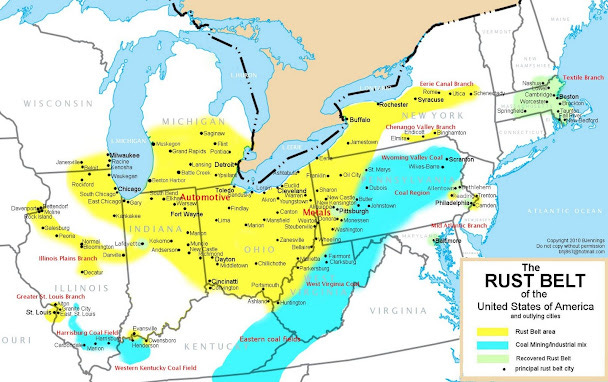Defining Rust Belt Urbanism
Many people have written off the Rust Belt. I continue to believe that it can, and will rebound -- on its own terms.
Here’s one representation of the Rust Belt. However, just like with definitions of the Midwest overall, people usually identify where they live in the region as the center of it. Source: beltmag.com
The Rust Belt has been given up for dead, at least economically, for the last 50 years. The broad swath of territory that covers the Northeastern and Midwest…
Keep reading with a 7-day free trial
Subscribe to The Corner Side Yard to keep reading this post and get 7 days of free access to the full post archives.

